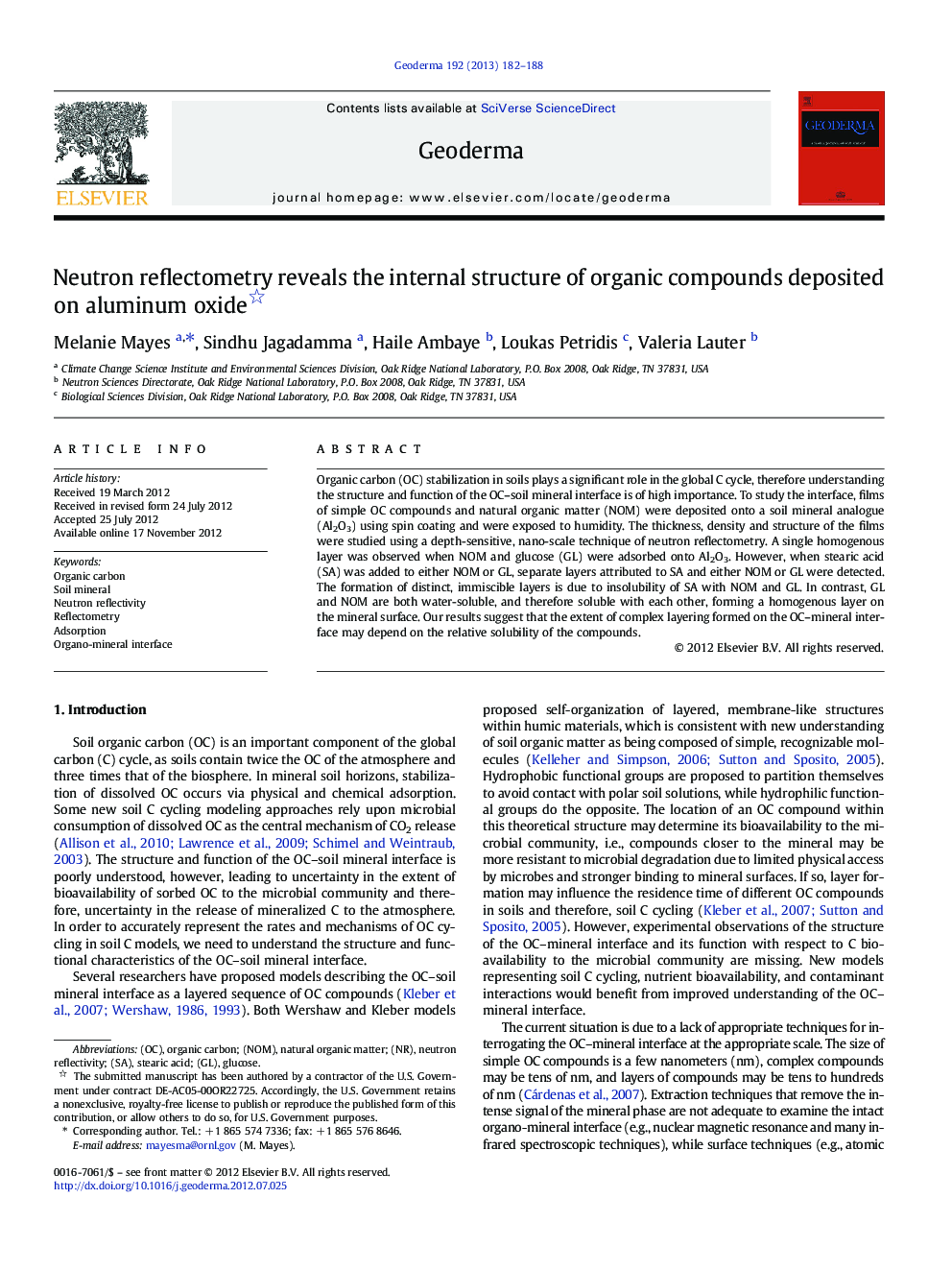| Article ID | Journal | Published Year | Pages | File Type |
|---|---|---|---|---|
| 4573766 | Geoderma | 2013 | 7 Pages |
Organic carbon (OC) stabilization in soils plays a significant role in the global C cycle, therefore understanding the structure and function of the OC–soil mineral interface is of high importance. To study the interface, films of simple OC compounds and natural organic matter (NOM) were deposited onto a soil mineral analogue (Al2O3) using spin coating and were exposed to humidity. The thickness, density and structure of the films were studied using a depth-sensitive, nano-scale technique of neutron reflectometry. A single homogenous layer was observed when NOM and glucose (GL) were adsorbed onto Al2O3. However, when stearic acid (SA) was added to either NOM or GL, separate layers attributed to SA and either NOM or GL were detected. The formation of distinct, immiscible layers is due to insolubility of SA with NOM and GL. In contrast, GL and NOM are both water-soluble, and therefore soluble with each other, forming a homogenous layer on the mineral surface. Our results suggest that the extent of complex layering formed on the OC–mineral interface may depend on the relative solubility of the compounds.
► Neutron density is related to chemical and isotopic composition. ► Neutron reflectometry determines neutron density as a function of depth. ► First application of neutron reflectometry to analogue soil organo-mineral interface ► Amphiphilic compounds impart multi-layered, complex organo-mineral interface.
